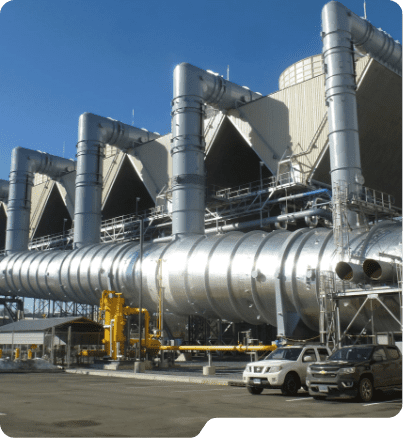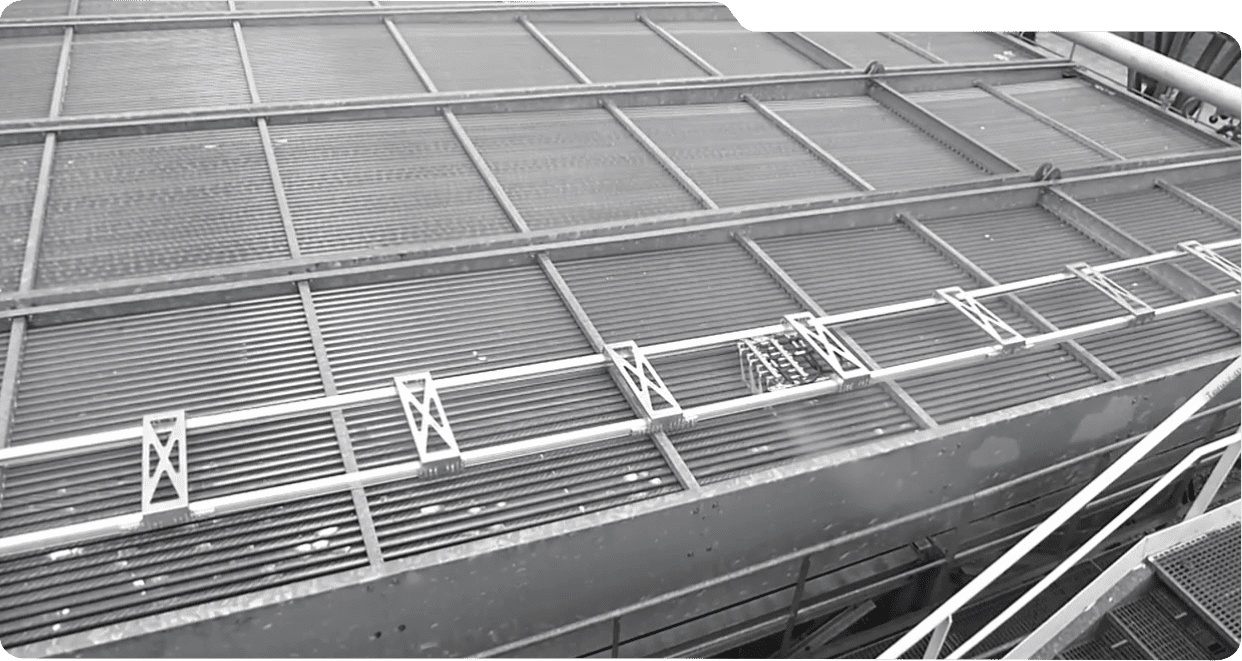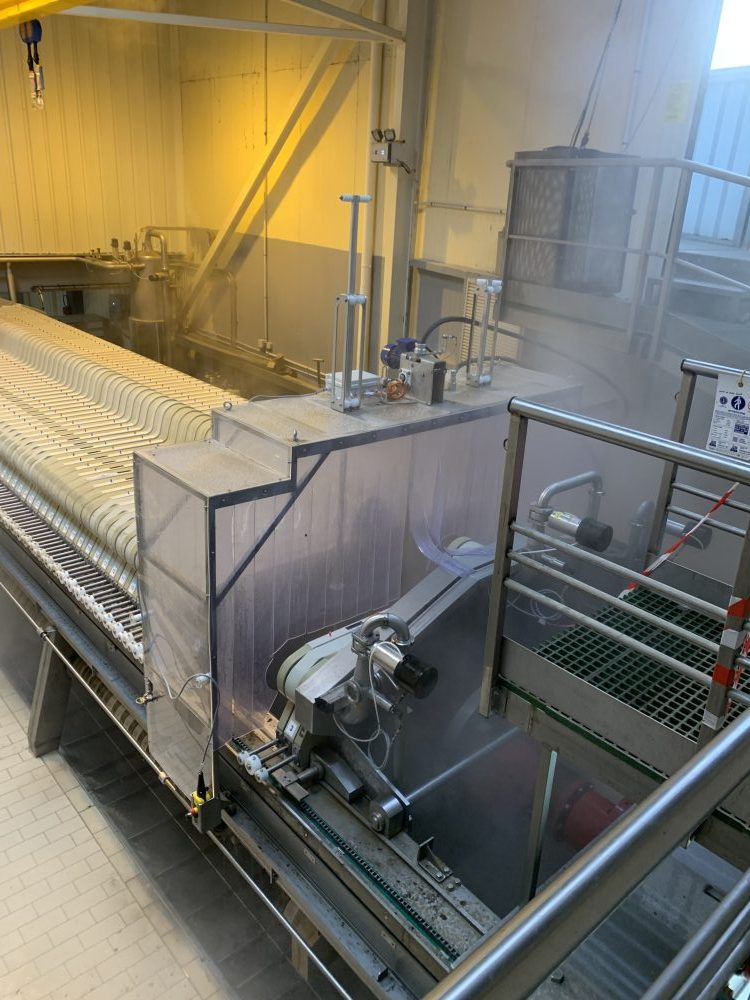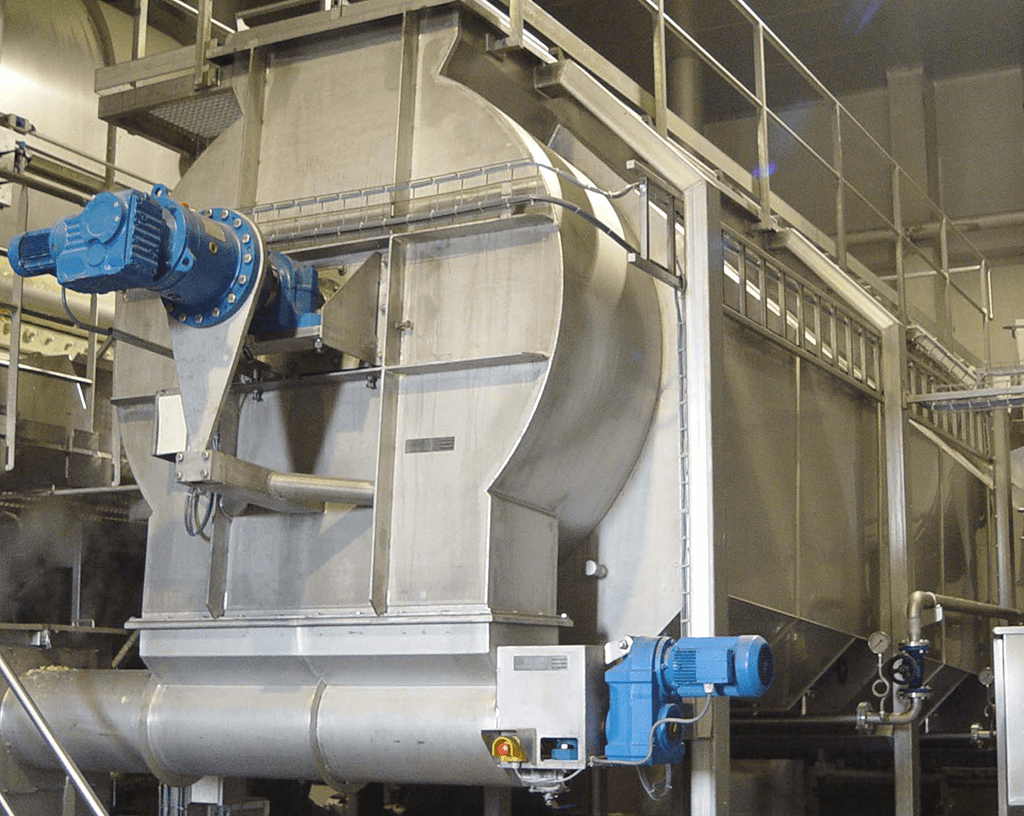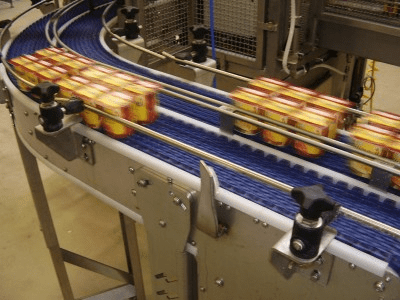- Our PlaygroundOur PlaygroundDiscover Ax System's innovative solutions for maintaining the performance of your industry. Designed to meet the unique needs of each industry, our systems provide effective and efficient cleaning for a range of applications. Whether you're in power generation, oil and gas or any other sector, our tailor-made solutions ensure optimum performance and longevity of your equipment.
- Our SolutionsOur SolutionsDiscover AX System's range of products, designed to meet a variety of industrial cleaning needs. Our products fall into our main categories: Air Cooler and Air Condenser Cleaning, Industrial Misting, Custom Industrial Cleaning, and Industrial Machine Cleaning Services.
We offer specific solutions to meet your unique needs. For instance, we provide Filter Press Cleaners, Electromagnetic Filter Cleaners, and Rotary Filter Cleaners. - What we cleanWhat we cleanDiscover our expertise in high-pressure cleaning for a variety of industrial equipment! Our know-how enables us to work on air condensers, heat exchangers and many other installations. Thanks to our specialized approach, we guarantee optimum performance and enhanced durability for these vital pieces of equipment.
- Our Achievements
- About Us
- Contact
what we clean
Discover our customised AX System expertise.

Our expertise in high-pressure water cleaning is the result of years of experience in the industrial sector. Thanks to our know-how, we are able to develop tailor-made cleaning solutions for a variety of industrial equipment. Whether for air-cooled condensers, heat exchangers or other critical installations, our specialist approach ensures optimum performance and increased durability.
Air condensers, for example, are vital components in air conditioning and refrigeration systems. They transfer heat between the air and the cooling fluid, enabling optimum temperatures to be maintained in industrial processes. However, over time, these air-cooled condensers accumulate deposits of dust, pollen and other particles, reducing their efficiency. Our high-pressure cleaning method removes this dirt, improving the system’s overall performance.
Heat exchangers can be found in many industrial sectors, including power generation, petrochemicals and the food industry. Their role is to transfer heat from one fluid to another, whether to cool an engine, heat water or regulate the temperature of a manufacturing process. However, the fins of these exchangers can become clogged with biological deposits, corrosion or impurities. Our expertise enables us to clean these fins thoroughly, guaranteeing optimum heat transfer and extended equipment life.
In short, our personalised approach and mastery of high-pressure cleaning techniques make AX System a trusted partner for maintaining the performance and reliability of industrial equipment. We are proud to contribute to our customers’ operational efficiency by offering solutions tailored to their specific needs.
- V-Frame ACC
ACC - Air Cooled Condenser
An air-cooled condenser (ACC) in a steam turbine power plant is a heat exchanger that condenses the low-pressure steam exiting the turbine into water, using ambient air as the cooling medium. The main purpose of the condenser is to maintain a low pressure in the steam cycle, which in turn maximizes the work done by the turbine.
The ACC typically consists of a series of heat exchanger tubes or coils, arranged in a configuration that allows for maximum heat transfer between the steam and the air. The tubes or coils are usually made of materials with high thermal conductivity, such as copper or aluminum. The steam enters the ACC and flows through the tubes or coils, while the ambient air is forced through the tube or coil arrangement by large fans or blowers. The air absorbs the heat from the steam, causing it to condense into water.
The condensed water is then collected in a hot well, where it is pumped back to the boiler to be reheated and converted back into steam. In some cases, the condensed water may be used for other purposes, such as cooling or process water.
The use of an ACC in a steam turbine power plant offers several advantages over a traditional water-cooled condenser, including reduced water consumption, lower operating and maintenance costs, and a more environmentally-friendly cooling solution. However, ACCs are typically larger and require more space than water-cooled condensers, and their performance can be affected by ambient air temperature and humidity.
- Flat Forced ACHE
ACHE - Air Cooled Heat Exchanger
An air-cooled heat exchanger (ACHE) a bundle of thin, corrugated fins or tubes through which the hot fluid flows. The air is then blown or naturally flows over these fins or tubes, absorbing the heat and cooling the fluid inside. ACHEs are widely used in various industries, including power generation, HVAC, petrochemical, and manufacturing, due to their simplicity, cost-effectiveness, and lower maintenance requirements compared to water-cooled systems.
- Low Pressure Press Filter
Press Filter
A press filter, also known as a filter press, is a mechanical device used to separate solids from liquids by applying pressure. In the brewery, wine, and water treatment industries, press filters are commonly used to clarify and purify the final product.
In the brewery and wine industries, the press filter is used to remove the solids, such as grape skins, seeds, and pulp, or spent grains and hops in beer, from the liquid after the crushing or mashing process. This results in a clearer, more stable, and visually appealing beverage.
In water treatment, press filters are used to remove suspended solids, such as sediment, bacteria, and other impurities, from the water. This is typically done after the coagulation and flocculation processes, where chemicals are added to the water to help the solids clump together and settle. The press filter then applies pressure to the settled solids, further compacting them and allowing the clarified water to pass through.
A press filter typically consists of a series of plates or frames, which are covered with a filter cloth or membrane. The liquid-solid mixture, or slurry, is then pumped into the press, where the plates are pressed together, forcing the liquid to pass through the filter cloth and leaving the solids behind. The filtered liquid is then collected and the solids are removed and disposed of.
- Exhaust filter
Electro Filter
An electro filter, also known as an electrostatic precipitator (ESP), is a device used to remove fine particles, such as dust, smoke, and other airborne pollutants, from a gas or air stream. The utility of an electro filter lies in its ability to effectively and efficiently remove these particles, which can have negative effects on human health, the environment, and industrial processes.
The electro filter works by using an electrical field to charge the particles in the gas or air stream. The charged particles are then attracted to and collected on a series of plates or tubes with the opposite charge. The collected particles are then periodically removed and disposed of, while the clean gas or air is released.
In industrial settings, electro filters are commonly used to remove particles from exhaust gases, such as those produced by power plants, cement factories, and other heavy industries. This helps to reduce air pollution and meet regulatory emissions standards.
In addition, electro filters are also used in HVAC systems to improve indoor air quality and in the manufacturing of electronics and other precision products, where even small amounts of dust or other particles can cause problems.
Overall, the utility of an electro filter is in its ability to provide cleaner air and gas streams, which can have a variety of benefits for human health, the environment, and industrial processes.
- Potatoe Drum
Rotary Filter
A rotary filter, also known as a rotary drum filter or rotary vacuum filter, is a device used to separate solids from liquids in a continuous and efficient manner. The utility of a rotary filter lies in its ability to handle large volumes of liquid-solid mixtures, or slurries, and produce a high-quality filtrate and a dry, easily-handled cake of solids.
The rotary filter consists of a large, cylindrical drum that is covered with a filter cloth or membrane. The drum is partially submerged in the slurry and rotates slowly. As the drum rotates, the slurry is drawn through the filter cloth by vacuum or gravity, and the solids are left behind on the surface of the drum.
As the drum continues to rotate, the solids are carried out of the slurry and are further dewatered by the action of the vacuum or gravity. The dry cake of solids is then scraped off the surface of the drum by a blade or other mechanism and is collected for disposal or further processing.
Rotary filters are commonly used in a variety of industries, including mining, chemical, food and beverage, and water and wastewater treatment. In mining, for example, rotary filters are used to separate valuable minerals from the waste rock and water. In the chemical industry, rotary filters are used to separate and purify a variety of products, such as plastics, resins, and pigments.
Overall, the utility of a rotary filter is in its ability to efficiently and continuously separate solids from liquids, producing a high-quality filtrate and a dry, easily-handled cake of solids.
- Hoven Conveyor
Conveyors
A conveyor is a mechanical system or system of devices that is used to transport materials, goods, or packages from one location to another within a facility. In a hygienic environment, conveyors are designed and built to meet strict sanitary standards to prevent the contamination of food, pharmaceuticals, and other products that require a high level of cleanliness.
- Stainless steel construction: The use of corrosion-resistant and easy-to-clean stainless steel for the frame, belt, and other components is common in hygienic conveyors.
- Smooth and sealed surfaces: The conveyor's surfaces are designed to be smooth and free of cracks, crevices, and other areas where bacteria and other contaminants can accumulate. Sealed surfaces also prevent the ingress of water and other cleaning fluids.
- Easy to disassemble and clean: Hygienic conveyors are designed to be quickly and easily disassembled for thorough cleaning and sanitizing.
- Food-grade belting: The belts used in hygienic conveyors are made of materials that are approved for use in the food industry and are resistant to the growth of bacteria and other microorganisms.
- Minimal lubrication: The use of lubricants is minimized in hygienic conveyors to prevent the contamination of products. Where lubrication is necessary, food-grade lubricants are used.
Hygienic conveyors are an essential component in maintaining a clean and sanitary environment in industries such as food and beverage processing, pharmaceuticals, and cosmetics.
Heat Exchanger
Air Cooled Condenser
ACC
Heat Exchanger
Air Refrigerant
ACHE
Air Refrigerant
ACHE
Press Filter
Electro Filter
Rotary Filter
Ax
System:
System:
Cleaner, greener, faster, smarter.
Revolutionary
Industrial Cleaning
Revolutionary
Industrial Cleaning
Cleaner, greener, faster, smarter.
Revolutionary
Industrial Cleaning
Revolutionary
Industrial Cleaning
AX System, born from the need for efficient maintenance of air coolers, is today a world leader in innovative industrial cleaning solutions. Our patented AX Cleaner Robot, a semi-automatic high-pressure water jet cleaning system, delivers proven results, improving air cooler efficiency. Rooted in service and focused on innovation, we offer tailor-made solutions for a cleaner and more efficient industrial world.
Romain Pennel. CEO

WE
IMPROVE
EFFICIENCY
Request
information

For more information about AX System, questions and
demonstrations or request a quote please fill out the form.



